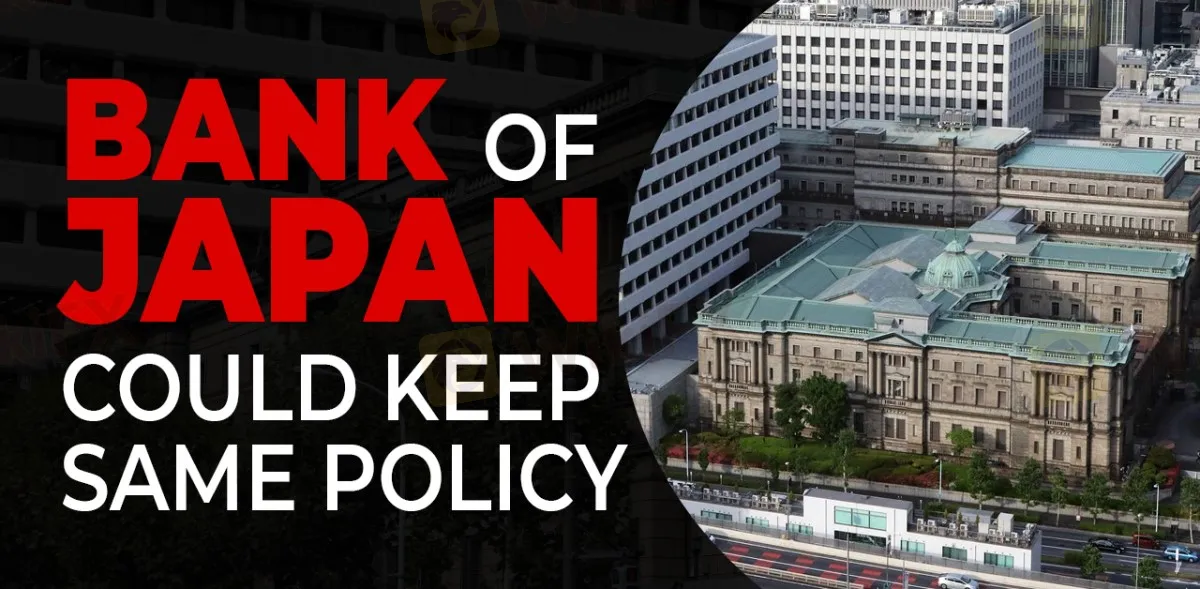Bank Of Japan Could keep same Policy
Zusammenfassung:The Bank of Japan is the central bank of Japan. The bank is often called Nichigin for short. The Bank of Japan, as the central bank of Japan, decides and implements monetary policy with the aim of maintaining price1 stability.

The Bank of Japan is the central bank of Japan. The bank is often called Nichigin for short. The Bank of Japan, as the central bank of Japan, decides and implements monetary policy with the aim of maintaining price1 stability.
The Bank of Japan Act states that the Bank's monetary policy should be “aimed at achieving price stability, thereby contributing to the sound development of the national economy.” The Bank of Japan kept the same outlier as compared to the other major central banks which have been raising interest rates at a fast pace throughout this year in a synchronized attempt to bring the inflation down.
This resulted in a down yen and fording Japanese authorities to step in in the currency market in September and October. But, after hitting a 32-year low against the USD, the yen staged a comeback, with the BoJ coming under the microscope as investors try to figure out whether a policy tweak is on the cards sooner rather than later. The Bank meets early on Tuesday, but no policy action is expected.
Governor Kuroda has been strict on the need to maintain ultra-low interest rates and pushed back against calls for reviewing the policy framework. He has been also repeating that the rise in core consumer prices is driven mostly by surging import costs and that inflation would return back to 2% during the next fiscal year.
With average monthly cash earnings slowing to 1.8% y/y in October from 2.2% in September, and headline inflation accelerating to 3.7% y/y from 3.0%, real wages shrank the most since July 2020. Combined with the GDP data revealing a small contraction during Q3, this makes the case for any change in policy or language at Tuesdays meeting unlikely.
Putting everything together, the yen is unlikely to be affected much by Tuesday‘s decision. With dollar traders not touched by the Fed’s last hawkish play for 2022, narrowing yield differentials between the US and Japan could continue working in favor of the yen. The currency might also reclaim its safe-haven status in case concerns about the performance of the global economy resurface. Should market participants continue pricing in 50bps worth of Fed rate cuts by the end 2023 , the yielding dollar could lose of the “ultimate safe heaven” and USD/JPY may continue to slide.
For the bearish outlook to be dismissed, a break above the high of November 22 and at 142.30 may be required. This would signal the pairs return above both the moving averages and the two aforementioned trendlines, and may encourage the bulls to climb towards the psychological zone of 145.00 marked by the inside swing low of October 27. That zone was also proven a strong resistance between September 7 and October 4, but if it fails to stop the advance this time, the rally could stretch towards the 148.80 territory, marked by the highs of the October 30 and November 1.

WikiFX-Broker
Aktuelle Nachrichten
Japanischer Yen hat Schwierigkeiten, bescheidene Gewinne gegenüber dem USD aufgrund von Tarifängsten zu nutzen
Sensations-Startup Loveable: Nimmt die KI uns jetzt wirklich die Jobs weg?
Longevity: Wie Florian Meissner sein Bluttest-Startup skalieren will — und welche Rolle der Gorillas-Gründer dabei spielt
Australischer Dollar steigt, während der US-Dollar vor dem ISM Manufacturing PMI gedämpft bleibt
Sensations-Startup Loveable: Nimmt die KI uns jetzt schon die Jobs weg?
Bitcoin springt auf mehr als 93.000 US-Dollar – das ist der Grund
Wechselkursberechnung


